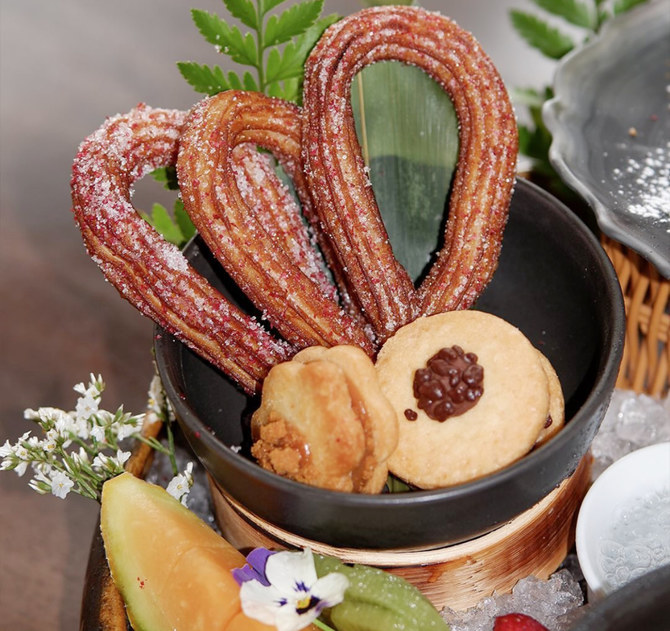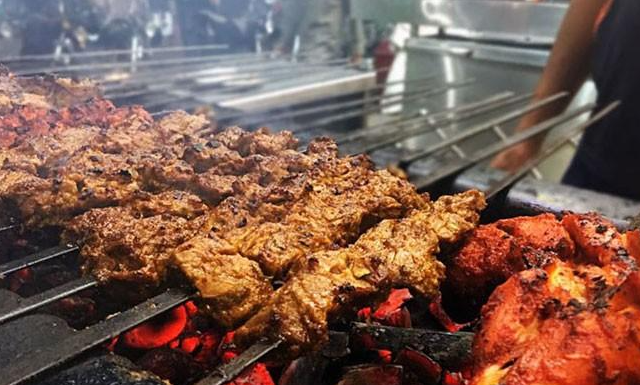
Leyla Yvonne Ergil
ISTANBUL: ‘Tis that time of year when Turks stock their winter pantry with tomato and pepper pastes prepared when the ingredients are at their peak in the final days of summer
September in Türkiye is salça time! This is the time of year when the tomatoes and red peppers are in season, and households across the country stock their pantries with homemade pastes and other savory sauces using these ingredients as a base. While these sauces can be consumed on their own, you will find that Turkish tomato and red pepper paste actually constitutes the basis of many, if not the majority, of Turkish culinary specialties.
That’s right, the thick Turkish tomato paste or red pepper paste, or a mixture of both, makes up the base flavor profile for most of Türkiye’s bean and vegetable dishes, stews and even kebabs. Thus, a jar of tomato paste is a must-have for the Turkish pantry and this is the time of year when the Turks prepare them.
Starting with “salça,” here’s how the Turks prepare and use the most special sauce in Turkish cuisine. To say it is a sauce actually does this tomato paste injustice. The thick tomato paste prepared in Türkiye is used as a basis for sauces and seasoning. While it can be eaten on its own, it does a dish wonders when complimented with olive oil and crushed garlic, which is literally how many of the bean dishes, bulgur and even mezes are prepared.
Tomato paste
To make salça, you will need to gather tomatoes harvested in the months of September and October. Boil them for one minute to easily remove the skins, then sprinkle salt on the tomatoes and let them rest in a strainer for at least an hour. The salting process helps release the bitter juices in the fruit and is a technique also used for red peppers and eggplant. While you can also simply boil the tomatoes down until it thickens into a paste, traditionally, salça is made out of sun-dried tomatoes, so before doing so, strain all of the water from the tomatoes and chop them up. You could also use a food processor for this. Then, you simply spread the tomatoes out into a dish or baking pan and let them sit in the sun.
When sun-drying tomatoes, there are two words of warning. First, do not leave salça outside overnight as the morning dew will add unwanted liquid to the process. Secondly, you are strictly supposed to use a wooden spoon when stirring. While Turks traditionally prefer all things copper, especially for the vessel, when it comes to stirring a dish, especially pilaf, a wooden spoon should always be your go-to. Roma tomatoes are the fruit of choice unless one is able to source truly special regional tomatoes.
Biber salçası
Admittedly one could easily mistake the tomato variety for the pepper paste, “biber salçası,” as they actually look and feel quite similar, but the taste does vary. Many cooks prepare these two sauces separately, while many also prepare a mixture of the two. Then there are the sweet red pepper variations and on the other end of the spectrum, salças made from the hottest peppers available. Also, whether green or red when their preparation starts, all pepper paste will eventually turn red and resemble tomato paste, just saying. The traditional pepper paste is also prepared from peppers that have been salted and left to sit for the bitter juice to run. They will have been most likely blended and spread out on trays to dry in the sun to become a paste. This paste is used in lesser amounts, but is still an integral ingredient in almost every Turkish dish that has a tomato sauce base. The two pastes together create that perfect signature Turkish flavor, in which garlic, sauteed onions and herbs like thyme are incorporated.

Menemen mix
Most anyone familiar with Turkish cuisine will know about menemen, a loosely scrambled egg dish cooked with stewed tomatoes and peppers. While it is generally prepared fresh, many households and establishments use this time of year as an opportunity to prepare jars of the tomato and pepper mix while the produce is in season. The basis of the egg dish menemen is prepared and stored in jars so that when you feel like making the dish, most of the preparation is already done in the form of the handy pantry jar of sauteed tomatoes and green peppers. When it comes to menemen, the juice of the tomatoes is a main feature and thus they shouldn’t be boiled down or sundried, but simply sauteed. This is after the highly recommended process of salting skinned, chopped fresh tomatoes and letting them sit in a strainer to release bitter juices. There is no getting around that process if you want to get it right. Other than that, the tomatoes are sauteed in olive oil and optionally crushed garlic after which the sauce reaches the right consistency, diced green peppers are added to the mix and cooked slightly. After all this, the sauce is ready for the jar, which of course should ways be disinfected by boiling first.
Red pepper breakfast sauce
Similar to the menemen sauce, the “kırmızı biber kahvaltılık sos” is one of the most precious condiments that can be prepared in the late-summer months. In lieu of chopped up tomatoes, in this sauce chopped red peppers are mixed with garlic, red pepper flakes and other spices. This sauce varies according to household preferences but it started as a way of conserving roasted red peppers. This means that originally red peppers were roasted, skinned, deseeded, diced up and placed in a jar with olive oil and yogurt. Now reaching new levels of creativity and comfort, the red peppers can also simply be sauteed and can have added tomatoes and green peppers and then jarred to be used as a breakfast dip or as the actual sauce in a dish. Some variations are flavored with basil and thyme. The most important point of preparing these sauces for the Turkish pantry is the timing and making sure the produce used is at its peak, and that season is now.
Courtesy: Dailysabah
The post Salça: All about Türkiye’s special tomato and pepper sauces appeared first on The Frontier Post.








